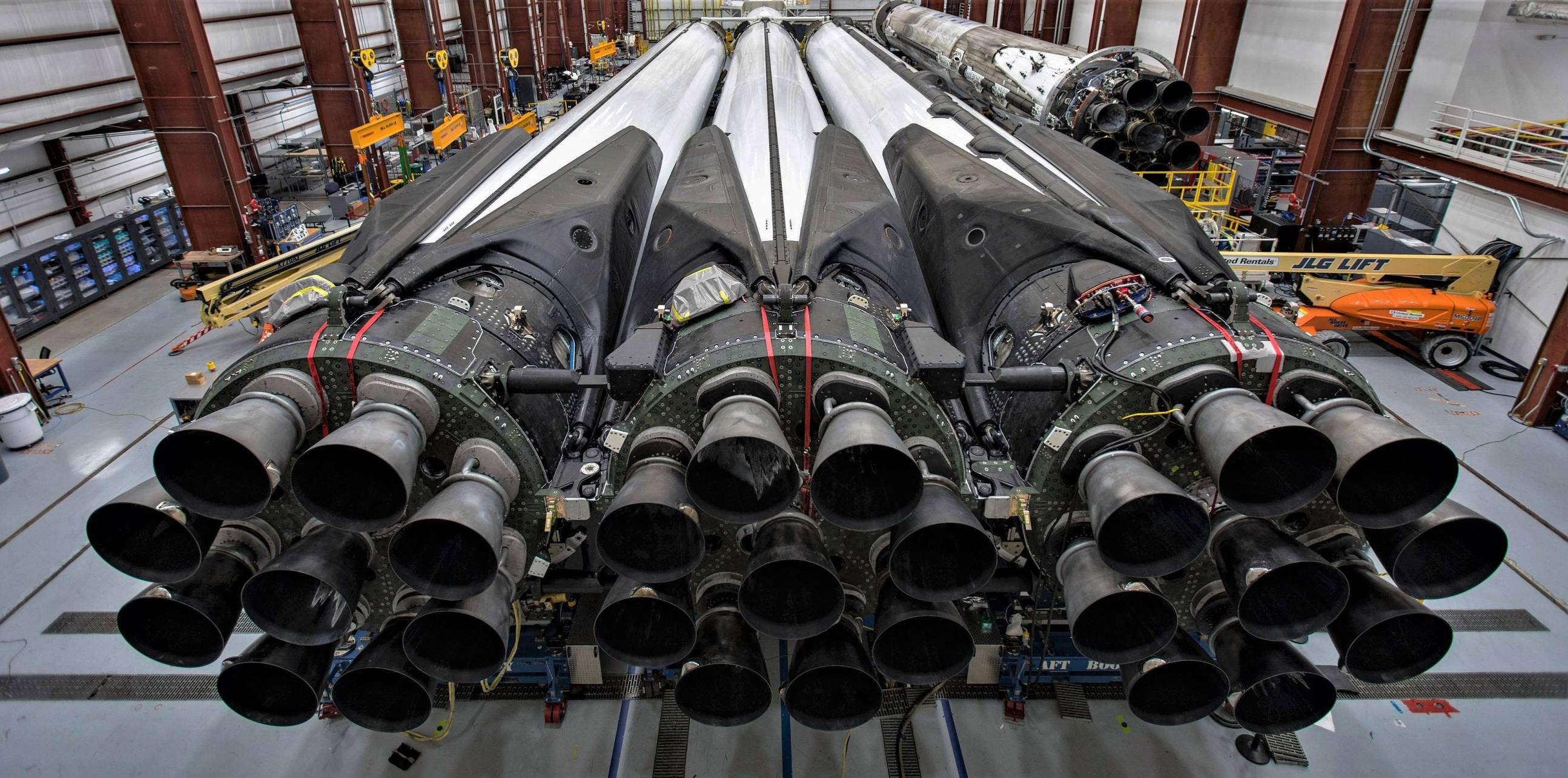SpaceX has revealed the first official media (including a timelapse video) of its Falcon Heavy Block 5 rocket, including one of the most spectacular photos of Falcon Heavy (and the Falcon family in general, for that matter) ever.
Over a period of 24-48 hours in early April, SpaceX technicians and engineers completed Falcon Heavy Flight 2’s final integration, attaching the side boosters to the center core and the rocket’s upper stage to its interstage. After assembled, cranes lifted the massive rocket – likely weighing upwards of 75 metric tons (165,000 lb) – and carefully installed it on Pad 39A’s transporter/erector (T/E), a large mobile structure that houses hold-down clamps and fueling/communications hardware, as well as the ability to lift the rocket vertical and horizontal. Soon after, the rocket rolled out to Pad 39A and performed its first integrated static fire, paving the way for a launch date as early as 6:35 pm EDT (22:35 UTC), April 9th.
Alongside the unique
Offered in 4K resolution, the photo is perhaps the most detailed official look yet at a Block 5 rocket, particularly so for a view of the engine section, octaweb, and heat shielding of not one but four boosters. Immediately noticeable is an intriguing green patina present on each Falcon Heavy booster’s shield heat shield structure, sometimes described (humorously) as the dance floor. Prior to these three boosters, the same structure of other Falcon 9 Block 5 boosters has never featured the same patina, indicating that it is either a distinct modification (improved shielding, perhaps) or – more likely – a vestige of manufacturing that disappears during each Block 5 booster’s first high-speed reentry. In other words, it might be a patina or an anti-corrosion coating that is literally burned off in the process of landing.

Additionally, the complex mechanisms connecting the three Falcon 9-like boosters are also easily visible. Rough visual comparisons between the mechanisms present on Falcon Heavy Flight 1 and 2 suggest that they are largely unchanged. Their ultimate job is to safely, reliably, and repeatedly transfer truly horrifying loads – at times, the majority of the thrust of both side boosters – with as little mass and aerodynamic disruption as possible, all while still successfully separating the three boosters and retracting thereafter. In a press conference shortly after Falcon Heavy’s successful launch debut, Musk repeatedly acknowledged that the additional hardware required – aside from a complete redesign for the center core – was an extraordinary engineering challenge, far harder than he had expected it would be.


Additionally, SpaceX confirmed that the fourth booster present inside 39A’s main hangar was Falcon 9 B1051, the same rocket that launched Crew Dragon into orbit for the first time one month ago. According to the Canadian Space Agency (CSA), B1051 is being refurbished for its Radarsat Constellation Mission (RCM), a trio of satellites planned to launch from Vandenberg Air Force Base (VAFB) no earlier than May 2019. Over the course of the Falcon Heavy integration timelapse, B1051 can be seen rotating on its rocket rotisserie as technicians work to rapidly turn the rocket around for its second launch.

Check out Teslarati’s Marketplace! We offer Tesla accessories, including for the Tesla Cybertruck and Tesla Model 3.











